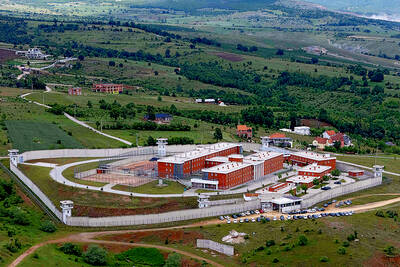Antarctica’s two native flowering plants are spreading rapidly as temperatures warm, according to the first study to show changes in fragile polar ecosystems have accelerated in the past decade.
The increase in plants since 2009 has been greater than the previous 50 years combined, coinciding with rapidly rising air temperatures and a reduction in the number of fur seals, said researchers working on Signy Island in the South Orkney Islands.
Populations of Antarctic hairgrass (Deschampsia antarctica) and Antarctic pearlwort (Colobanthus quitensis) have been studied by scientists on the island since 1960.
Research found that hairgrass spread five times faster between 2009 and 2018 than between 1960 and 2009. For pearlwort, the increase was almost 10 times more, the paper said.
In the past decade, summer warming has increased from 0.02°C to 0.27°C each year, despite strong cooling recorded in 2012.
“Antarctic terrestrial ecosystems respond quickly to these climatic inputs,” said lead researcher professor Nicoletta Cannone from the University of Insubria in Como, Italy. “I was expecting an increase of these plants, but not of this magnitude, we are receiving multiple evidences that a major change is occurring in Antarctica.”
The primary driver of change is warming summer air, the study said, which provides one of the longest records of changes in vegetation in Antarctica.
A secondary reason is there are fewer fur seals on the island, which trample on the plants. It is not known why the number of seals has declined, but it is likely to be related to changes in food availability and sea conditions.
Analysis shows that fur seals influenced changes from 1960 to 2009, while the main driver between 2009 and 2018 was temperature increase.
Warming trends are expected to continue, with more ice-free areas created over the coming decades, and scientists say the findings from Signy Island are representative of processes happening in the region more generally.
“Our findings support the hypothesis that future warming will trigger significant changes in these fragile Antarctic ecosystems,” researchers wrote in the paper, published in Current Biology.
The spread of these species will cause changes in soil acidity, the bacteria and fungi in the soil, and in how organic matter decomposes.
Changes in soil chemistry, as well as degradation of permafrost, will cause a cascade of changes, with “consequences on all components of terrestrial ecosystems,” Cannone said.
The plants are adapted to a very short growing season and are able to photosynthesize in snowy conditions with air temperatures below 0°C.
Despite being able to reproduce quickly and in harsh climatic conditions, they are not good at competing with other non-native plants.
Although warming might benefit some native species in isolation, it greatly increases the risk of the establishment of non-native species that could outcompete native species and trigger irreversible wildlife loss, researchers said.
In 2018, for example, an invasive grass species called Poa annua — which is often used on golf courses — colonized Signy Island.
“The ingression of alien species can induce a dramatic loss of the native biodiversity of Antarctica which required million of years of evolution and survival,” Cannone said. “Moreover, the vegetation change will imply a domino effect on the whole biota of the terrestrial ecosystems.”
During the mid-Pliocene, the Antarctic experienced warming events that allowed the spontaneous migration of species from South America to Antarctica, and the other way around. Current levels of warming could have already triggered such migrations of mosses, lichens, vascular plants and invertebrates, facilitated by human activity — namely increasing levels of tourism — in the Antarctic, scientists said.
Kevin Newsham, a terrestrial ecologist at the British Antarctic Survey, who was not involved in the study, said: “The study shows that further increases in populations of these plant species can be expected as Antarctica warms in future decades, leading to a greening of the region, but that there may also be increased risks to ecosystems associated with the establishment of alien plant species.”

Packed crowds in India celebrating their cricket team’s victory ended in a deadly stampede on Wednesday, with 11 mainly young fans crushed to death, the local state’s chief minister said. Joyous cricket fans had come out to celebrate and welcome home their heroes, Royal Challengers Bengaluru, after they beat Punjab Kings in a roller-coaster Indian Premier League (IPL) cricket final on Tuesday night. However, the euphoria of the vast crowds in the southern tech city of Bengaluru ended in disaster, with Indian Prime Minister Narendra calling it “absolutely heartrending.” Karnataka Chief Minister Siddaramaiah said most of the deceased are young, with 11 dead

By 2027, Denmark would relocate its foreign convicts to a prison in Kosovo under a 200-million-euro (US$228.6 million) agreement that has raised concerns among non-governmental organizations (NGOs) and residents, but which could serve as a model for the rest of the EU. The agreement, reached in 2022 and ratified by Kosovar lawmakers last year, provides for the reception of up to 300 foreign prisoners sentenced in Denmark. They must not have been convicted of terrorism or war crimes, or have a mental condition or terminal disease. Once their sentence is completed in Kosovan, they would be deported to their home country. In

Brazil, the world’s largest Roman Catholic country, saw its Catholic population decline further in 2022, while evangelical Christians and those with no religion continued to rise, census data released on Friday by the Brazilian Institute of Geography and Statistics (IBGE) showed. The census indicated that Brazil had 100.2 million Roman Catholics in 2022, accounting for 56.7 percent of the population, down from 65.1 percent or 105.4 million recorded in the 2010 census. Meanwhile, the share of evangelical Christians rose to 26.9 percent last year, up from 21.6 percent in 2010, adding 12 million followers to reach 47.4 million — the highest figure

LOST CONTACT: The mission carried payloads from Japan, the US and Taiwan’s National Central University, including a deep space radiation probe, ispace said Japanese company ispace said its uncrewed moon lander likely crashed onto the moon’s surface during its lunar touchdown attempt yesterday, marking another failure two years after its unsuccessful inaugural mission. Tokyo-based ispace had hoped to join US firms Intuitive Machines and Firefly Aerospace as companies that have accomplished commercial landings amid a global race for the moon, which includes state-run missions from China and India. A successful mission would have made ispace the first company outside the US to achieve a moon landing. Resilience, ispace’s second lunar lander, could not decelerate fast enough as it approached the moon, and the company has